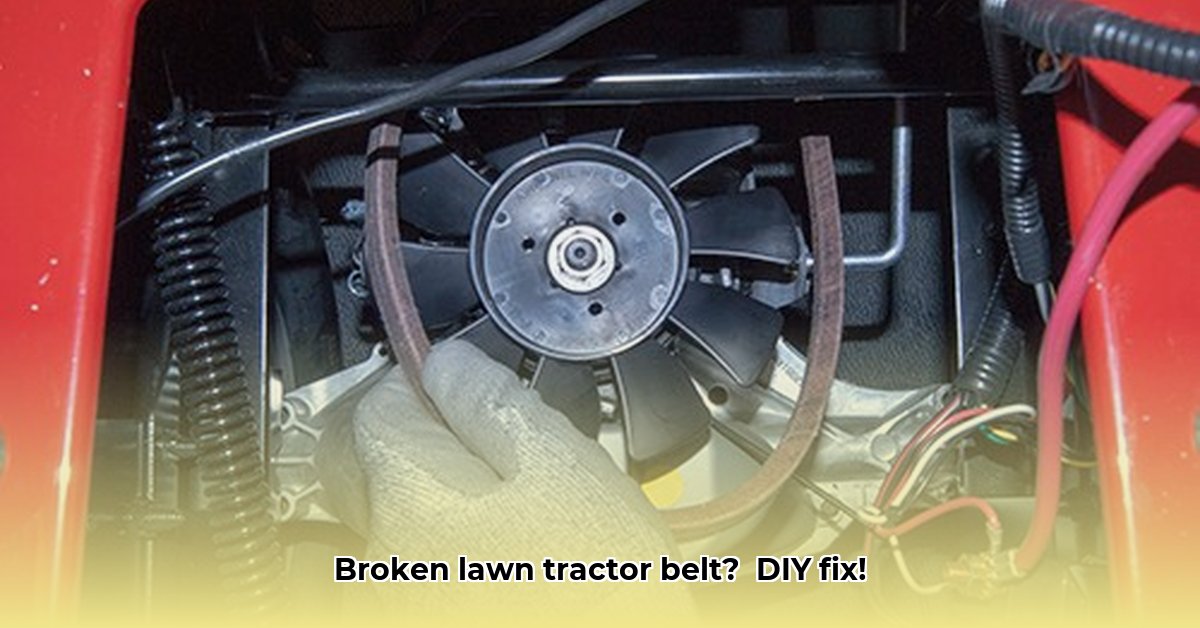
Identifying the Problem: Which Belt Needs Replacing?
Before you start, determine which belt needs replacing. Most Craftsman lawn tractors have two: the drive belt (powers the wheels) and the blade belt (powers the blades). A failing drive belt causes sluggish movement, especially uphill or in thick grass. A worn blade belt leads to uneven cuts or complete blade stoppage. Inspect both belts for cracks, fraying, or stretching. A damaged belt is usually obvious. For additional Craftsman resources, check out this helpful website.
Gathering Your Tools and Parts
To successfully replace your Craftsman lawn tractor belt, gather these essentials:
- Replacement Craftsman lawn tractor belt: Crucially, get the correct size and type. Your owner's manual (consult 1) provides the necessary specifications. Using the wrong belt can damage your tractor.
- Socket wrench set: For loosening and tightening bolts.
- Screwdrivers (Phillips and flathead): For removing panels.
- Work gloves: Protect your hands.
- Clean, spacious work area: For safe and comfortable work.
- Belt tension tool (possibly): Some models require this tool to release belt tension; check your owner's manual.
Safety First!
Before you begin, prioritize safety:
- Disconnect the spark plug wire: This prevents accidental starting and potential injury. This is the most critical step.
- Level surface: Ensure the tractor is on a stable, level surface to prevent it from rolling.
- Cool engine: Allow the engine to cool completely to avoid burns.
Step-by-Step Belt Replacement
The exact steps might vary slightly depending on your Craftsman model. Refer to your owner's manual for model-specific instructions. However, these general steps apply to most models:
- Locate the Belt: Remove any panels or covers to access the belt. Your owner's manual shows the belt's location.
- Release Tension: Use a belt tension tool (if needed) to release the belt tension. Your owner's manual will guide you through this step. Take your time and avoid rushing.
- Remove the Old Belt: Gently guide the old belt off the pulleys. Don't force it; some maneuvering might be necessary.
- Install the New Belt: Carefully reverse the removal process. Ensure the new belt is correctly seated on all pulleys.
- Re-engage Tension: Carefully re-engage the belt tension as specified in your owner's manual. Proper tension is crucial for optimal performance.
- Reassemble: Put everything back together securely.
- Test Run: After reconnecting the spark plug wire, start the engine and listen for any unusual noises. If you hear squealing or grinding, shut off the engine and check your work.
Troubleshooting: My New Belt Doesn’t Fit!
If the new belt is too tight or loose, you likely have the incorrect belt. Double-check the belt number and specifications against your owner's manual. Using the wrong belt can cause significant damage.
Post-Replacement Care: Maintaining Your Belt
Regularly inspect the new belt for wear and tear. Proactive maintenance significantly extends belt and mower lifespan. Preventing problems is far cheaper than fixing them.
Beyond the Belt: Preventative Maintenance
Replacing the belt is a great start. Consider other parts that might need attention:
- Air filter: Is it clogged?
- Spark plug: Does it need replacing?
Addressing these issues now can prevent larger, more expensive repairs down the line. A well-maintained mower will last longer.
This guide empowers you to replace your Craftsman lawn tractor belt confidently. Remember, patience and careful attention to detail are crucial for success. Happy mowing!